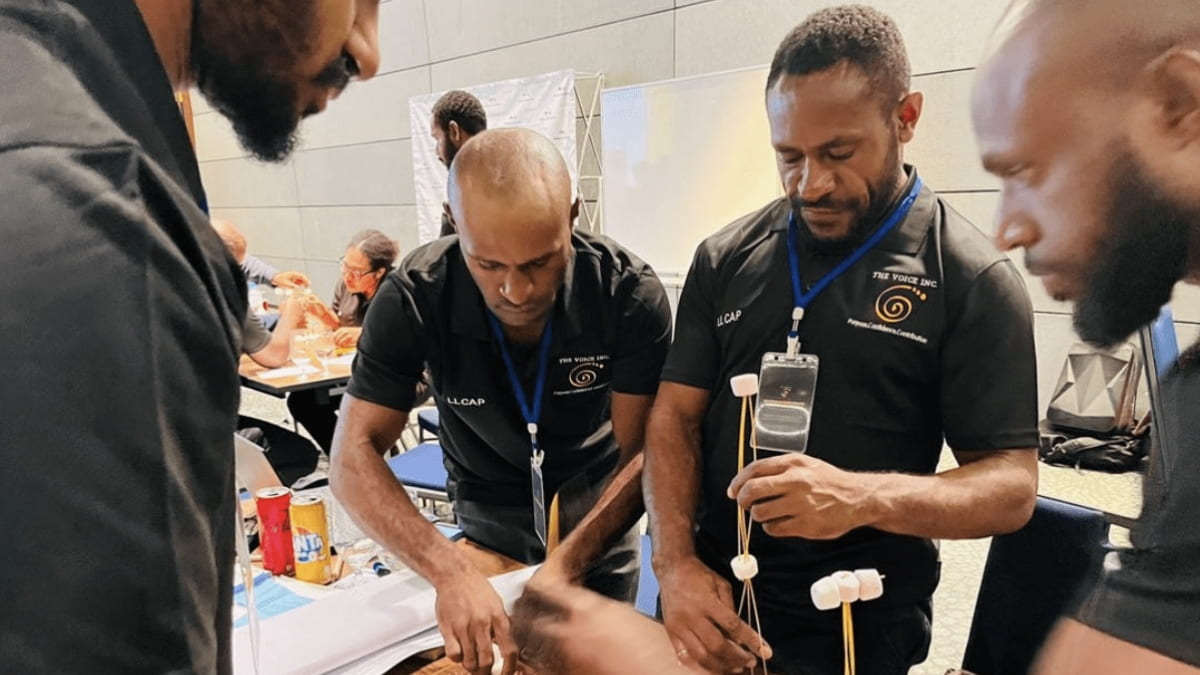Guest blog by Langa Kopio, Herry Mek, Frank Awape, Linson Karu, Joe Willie
Over the past 7 weeks our team has been working on our problem statement, which is the ‘Lack of Monitoring, Evaluation and Reporting on the Capital Investment Budget (CIB) in Papua New Guinea’. We started off with the lack of governance in Papua New Guinea. But after the first five weeks of going through the program we needed to be more focused and decided to narrow down the problem.

One thing that stood out for us was the disconnection and misalignment of plans at each level of the government from the top-down. So much planning and effort is placed into developing and launching development plans within the capital city but the lack of inclusion from internal and external stakeholder within and around the provincial and district levels cause misalignment and confusion when the plans are brought down to be implemented.

From this experience having been shared during the provincial and district alignment consultations, we discussed with the team in charge of the M&E Framework to review and adjust the M&E Framework. A formal request with briefings and meeting minutes has been sent to the Secretary’s Office of the Department of National Planning and Monitoring for endorsement and approval.
Some of the key learnings from this course that we have been using a lot and will continue to use in the future to solve problems include:
- Deconstruction of Complex Problem through the use of the Fishbone or Ishikawa Diagram.
- The Crawling Design Space.
- Using the Triple – A Change Analysis to find entry points and measure our probability of actual getting results.
For the PDIA Program, there is so much that can be learnt from the resources, articles, videos, and lesson plan given that going through it once is not enough. The materials and resources provided are entry points in itself that lead to more details on exercising the PDIA Process.
The course has really given us a great way to analyse, deconstruct and construct the problems, issues, or challenges that we face. Whether that be towards nation building or be it in our careers or just in our individual personal lives. It’s been a daily tool at work and personally a skillset that has been readily applicable to many endeavours.

We want to use or apply what we have learned in this course to solve any problem or public issues that affects our country. As a team working with one of the national government central agency it will help us a lot in solving development problems and address policy issues affecting our country through good policy design and planning. By deconstructing the agenda and discussing more, so we can properly define the challenge, problem, or issue.
Here’s an example of how the PDIA approach is readily usable in any situation. One of our members has been working on bridging the knowledge gap on the opportunities that are available to youths by using the PDIA approach. Setting up meetings with people within his network that work within different sectors to have discussions with them on his ideas and thoughts. From his discussion he then reviews and edits or makes continuous iterations to the design of the project so that it speaks and fits into a particular niche and so it is more problem driven rather then solution driven. Meaning the solution that is being designed which is the project proposal is specifically tailored to fit into the context of what is needed and desired.

As a team we’re incredible thankful to the The Voice Inc. and the Harvard Team for offering and allowing our team to be a part of this cohort for PDIA Course.

This blog was written by participants who completed a 12-week PDIA for PNG online action-learning program from August – December 2023. 36 participants successfully completed this program.
